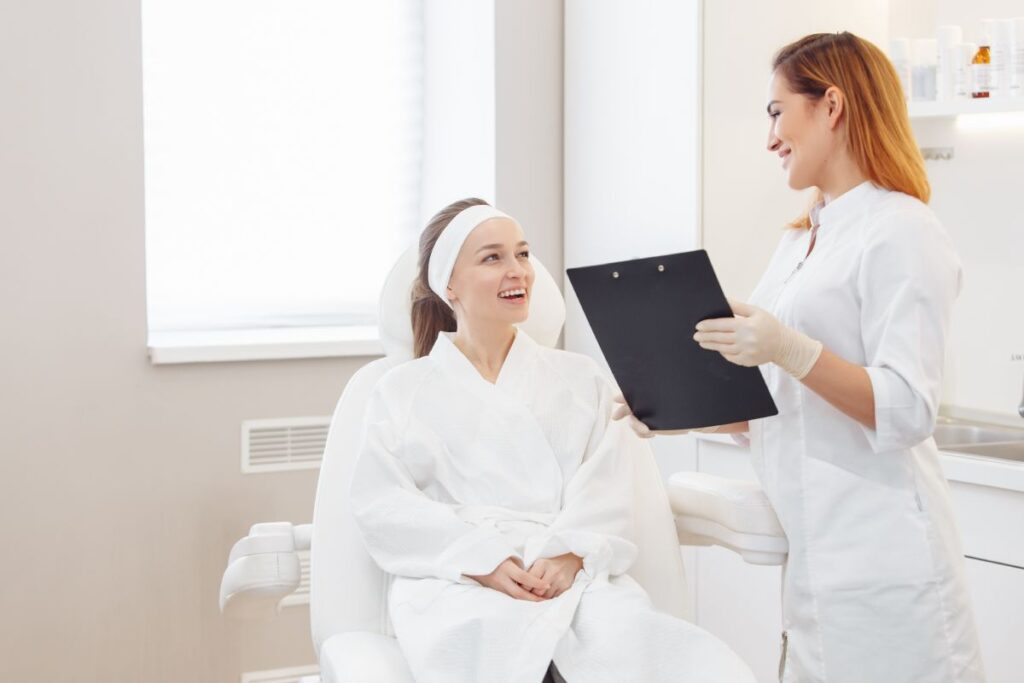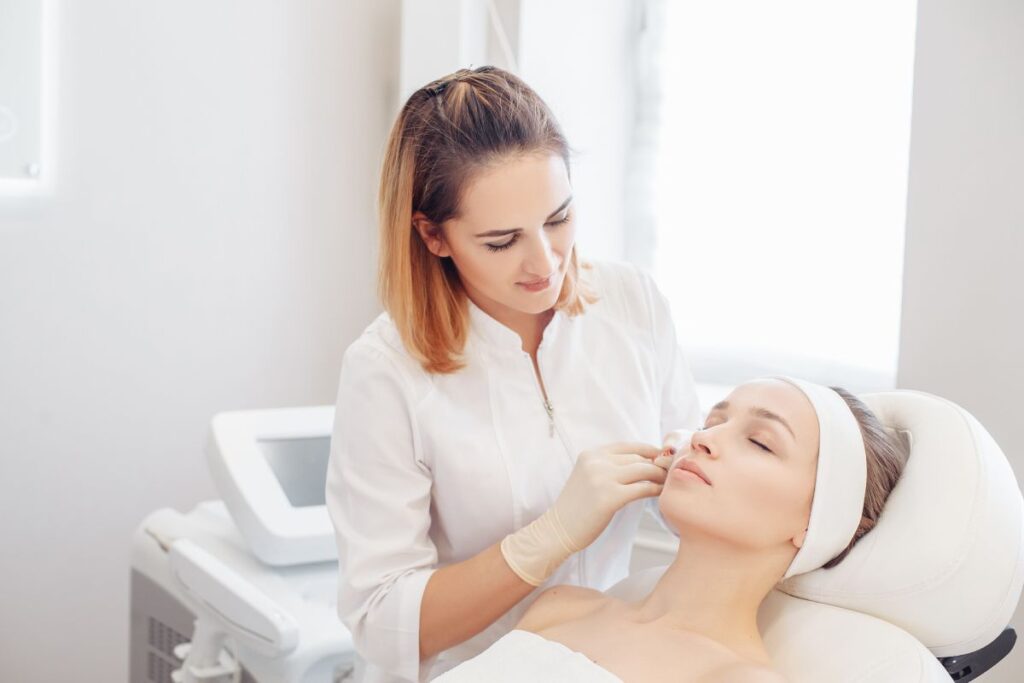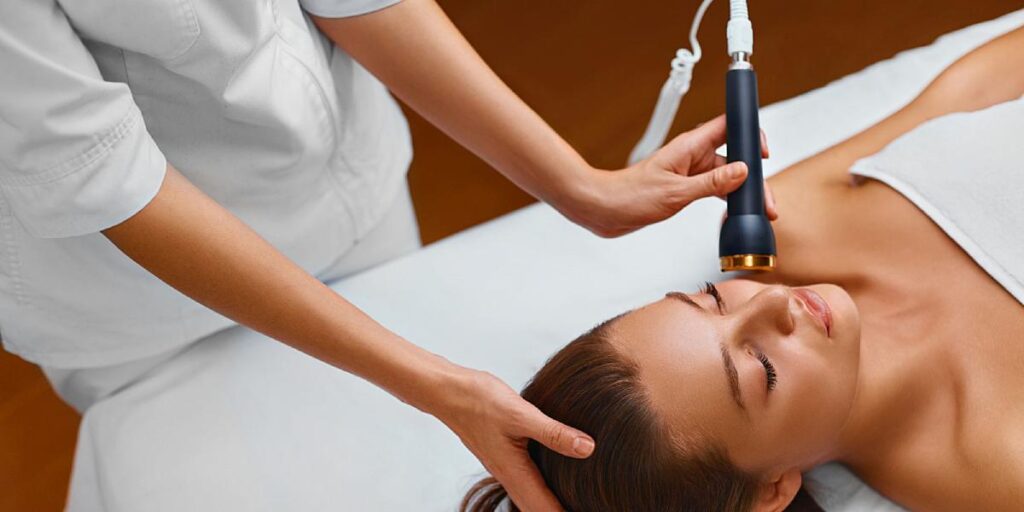Microdermabrasion
Reveal fresh, radiant skin with a microdermabrasion treatment at Elume Medspa. Book your appointment today! Book Microdermabrasion TreatmentAbout Microdermabrasion
Microdermabrasion is a non-invasive skin resurfacing treatment designed to exfoliate and rejuvenate your skin, leaving it smoother, brighter, and more youthful. By gently removing the outermost layer of dead skin cells, microdermabrasion stimulates cell renewal and improves the effectiveness of your skincare routine.
How Does Microdermabrasion Work?
Microdermabrasion devices spray fine crystals (or uses a diamond-tip applicator) to remove the outer layer of dead skin cells, while a vacuum system gently suctions away debris, revealing smoother, healthier skin. This process stimulates blood flow, encourages collagen production, and promotes skin renewal, resulting in a brighter and more youthful appearance.
Why Consider A Microdermabrasion Treatment?
Microdermabrasion is an excellent choice for those seeking brighter, healthier-looking skin. Key benefits include:
- Provides significant exfoliation without downtime or discomfort
- Allows your skincare products to penetrate deeper for better results
- Improves the appearance of mild acne scars and prevents clogged pores
- Minimizes the appearance of fine lines and wrinkles over time
- Smooths rough patches and enhances overall skin softness
- Removes dull, dead skin cells for a more radiant glow
The Microdermabrasion Treatment Process
Consultation
Preparation
Treatment
Post-Treatment
Review & Assessment
Every microdermabrasion treatment at Elume Medspa begins with a personalized consultation with one of our licensed providers.
During this session, your provider will assess your skin’s condition, discuss your concerns and goals, and determine if microdermabrasion is the most effective treatment for your needs. We will also review your medical history and current skincare routine to ensure the treatment is safe and customized for your skin type.

Pre-Treatment Preparation
On the day of your appointment, your skin will be thoroughly cleansed to remove all traces of makeup, oil, and impurities, ensuring a clean and sterile treatment area.
If needed, your provider will apply a gentle exfoliating solution to prepare the outer layer of your skin for the microdermabrasion process. Before starting, your provider will confirm your treatment plan, explain each step, and ensure you are comfortable and relaxed.

Exfoliation Treatment
During the treatment, your provider will use a handheld microdermabrasion device to exfoliate your skin, removing the outer layer of dead cells with fine crystals or a diamond-tip applicator. A vacuum system simultaneously clears debris and boosts circulation.
The procedure is non-invasive and painless, with a mild scratching or suction sensation as the device moves across your skin. Your provider will focus on areas of concern, such as fine lines or scars, ensuring an even treatment in 30–45 minutes.

Hydration & Protection
Once the exfoliation is complete, your provider will apply a soothing serum or hydrating mask to calm your skin and replenish moisture. This step is critical for restoring balance and enhancing the overall results of the treatment.
A broad-spectrum sunscreen will also be applied to protect your freshly exfoliated skin from sun damage. Your provider will discuss any immediate post-treatment sensations you may experience, such as slight redness or sensitivity, and explain how to care for your skin to optimize healing and results.

Microdermabrasion Treatment
FAQs
Does Inkless Stretch Mark Removal Really Work?
Yes, inkless stretch mark removal is an effective treatment for reducing the appearance of stretch marks. By promoting collagen and elastin production through microneedling and a specialized serum, the procedure helps to smooth and blend stretch marks with the surrounding skin. Results vary depending on the severity of the stretch marks and the number of sessions completed, but most clients see noticeable improvements after a few treatments.
How Long Does Inkless Stretch Mark Removal Last?
The results of inkless stretch mark removal are long-lasting, as the treatment stimulates your body’s natural collagen production to improve skin texture and elasticity. While improvements are typically permanent, factors such as aging, skin care routine, and sun exposure can influence the longevity of results. Maintenance treatments may be recommended to address new stretch marks or preserve optimal results.
How Many Sessions Are Needed For Optimal Results?
The number of sessions varies depending on the severity and size of your stretch marks. Most clients require 3–6 sessions spaced 4–6 weeks apart for the best results.
Does Scar Camouflage Work?
Yes, scar camouflage tattooing is highly effective at reducing the visibility of scars by blending them with your natural skin tone. Using precise micropigmentation techniques, this treatment creates a seamless transition between the scar and surrounding skin. While results vary depending on the scar type and skin tone, most clients achieve significant improvements in appearance, restoring confidence and a more even complexion.
How Many Sessions Are Needed?
The number of sessions varies depending on the size, color, and complexity of the scar. Most clients achieve their desired results in 1–3 sessions, spaced 4–6 weeks apart.
How Long Does A Scar Camouflage Tattoo Last?
The results of scar camouflage tattooing are long-lasting, typically remaining visible for 3–5 years. Over time, the pigment may gradually fade due to natural skin exfoliation and sun exposure. Touch-up sessions can help maintain the results and adjust the pigment as needed.
How Long Do Microdermabrasion Results Last?
The results of microdermabrasion can last several weeks, depending on your skincare routine and lifestyle. Regular treatments every 4–6 weeks can help maintain and enhance the benefits over time.
Does Microdermabrasion Remove Blackheads?
Yes, microdermabrasion is effective at removing blackheads by exfoliating the outer layer of skin and unclogging pores. Regular treatments can also help reduce the occurrence of blackheads over time.
How Long Does It Take For Microdermabrasion To Work?
You can typically see noticeable improvements in your skin texture and brightness immediately after your first treatment. However, for more significant results, such as reduced fine lines or acne scars, multiple sessions are usually recommended.